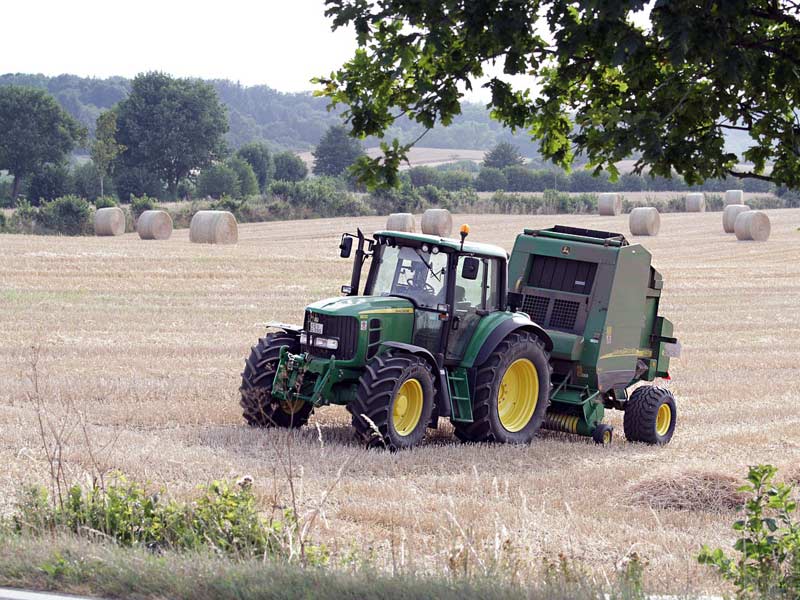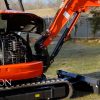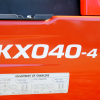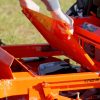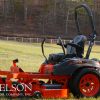Large hay bales can weigh anywhere in the range of 500 to 2500 pounds, and anything that big can be pretty dangerous. When handling huge bales, it’s very important to follow safe handling and storage procedures, and critical to use the right equipment for the job.
Before You Begin Baling
Before baling season starts, review the safety and operations precautions in your baler owner’s manual to bone up on anything you might have forgotten. Understanding how the tractor rakes and bales the hay will help keep you safe.
Be sure to examine the entire hay baler and take care of any repairs it may need. Good machine maintenance is crucial for everything to run smoothly.
Make sure you have enough power and weight to handle the job. Reference the manual for the guidelines to determine what size tractor is right for the baler. Tractors that feature a roll over protection structure (ROPS) are best when baling.
Personal Safety
Entanglement incidents are very common during baling, and can be very dangerous. Accidents are are most likely to happen if the machine is left running and unattended.
Never leave the tractor seat before disengaging the power take off (PTO), shutting down the tractor, removing the key from the ignition, and making sure all parts have stopped turning to prevent these types of incidents. All shields should be in place on the power take off (PTO) driveline and on any other moving part.
When operating a round baler, be careful about what you wear. Nothing should be loose enough to get caught in the machine. Tuck in your shirt, avoid loose sleeves, don’t wear necklaces, scarves, or loose jewelry, and, most importantly, put long hair up and tucked under a cap. Seriously, scalping happens. Don’t take chances.
Scoping Out the Terrain
Not all hay fields are flat, and there are certain things you should keep in mind when baling on uneven terrain to remain safe. Round balers have a high center of gravity, creating the potential to tip sideways if a wheel hits a hole, ditch, or other obstruction in the path.
You should always travel at a slow speed to make it easier to dodge any hazardous obstructions in your way. While baling, avoid sharp turns, which can cause the wheels of the tractor to make contact with the tongue of the baler, creating instability.
Setting the wheels to maximum width will help with the stability of the tractor. When ejecting a bale of hay on hilly landscape, make sure it is ejected in a perpendicular position to the slope so the bale does not roll down.
Working Hazards
Baler fires caused by friction are a common hazard. When using a hay baler, always have a 10 pound chemical fire extinguisher handy, just in case.
Bales can be wrapped individually or in rows. Individual bale wrapping is handled by a machine that lifts the bale from the field and wraps it in a plastic film on the machine’s wrap table. Bale wrappers are controlled manually with the hydraulic system from a joystick near the operator’s seat.
Front end loaders equipped with specialized equipment are usually used when handling large round bales. You must first remove the bucket from the loader and switch it out for an attachment that is constructed to handle round bales, like a grapple hook or a bale spear.
Using a grapple hook or spear is best because it decreases the chances of the bale rolling backwards onto the loader arms or onto the operator. Always be aware of your surroundings when using a front end loader, including overhead power lines. The adage “Go slow and keep the load low” is a helpful reminder to farmers carrying large round bales.
The center of gravity on a tractor shifts upward when carrying a large round bale, and sometimes farmers will raise the loader higher in order to boost their visibility, which raises the center of gravity even more. The higher the load, the greater the risk of a side or backwards overturn. Keeping the load as low as possible is much safer.
When moving a bale, be sure to use the the controls smoothly and avoid making any rough or jerky movements. Move slowly and make sure there is enough balance on the front end and the rear to counterbalance the load.
Sudden tractor braking, especially if on a hill, can cause an overturn. Always brake gently when handling a heavy load.
Handling large round bales can be very hazardous, and it’s important to practice safe procedures when baling. Use the proper equipment for baling, and make sure the equipment is heavy and sturdy enough to handle the load size. Drive slowly and cautiously, avoiding steep hills, obstructions, and irregular terrain. Whenever you have a doubt about the equipment or procedures, refer back to your owner’s manual for assistance. Knowledge is fundamental for safe tractor operation when handling large round bales.
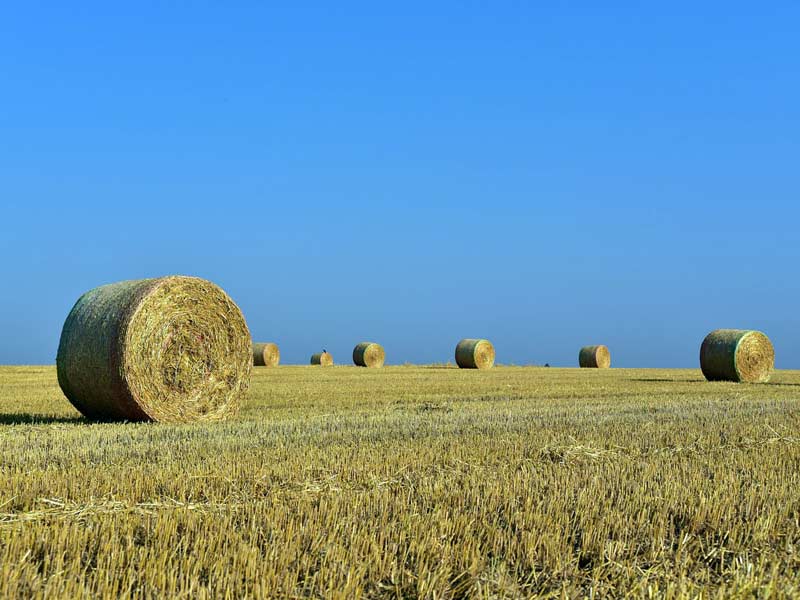
Sources:
Safety Recommendations When Baling and Handling Round Bales. (2012) Farm and Ranch eXtension in Safety and Health (FReSH) Community of Practice. Retrieved from http://www.extension.org/pages/64301/safety-recommendations-when-baling-and-handling-round-bales.
VA Tech Cooperative Extension Large Round Bale Safety


